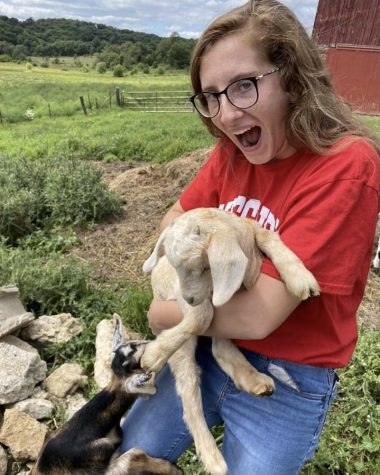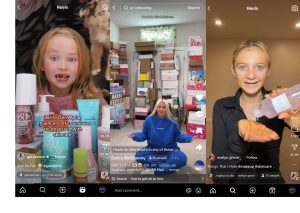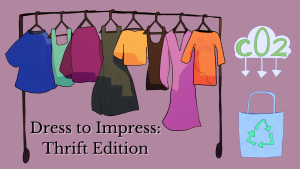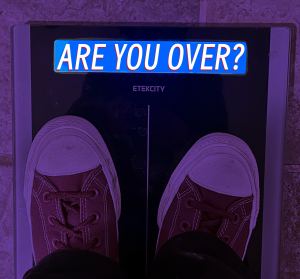A Science Experiment: Going Virtual
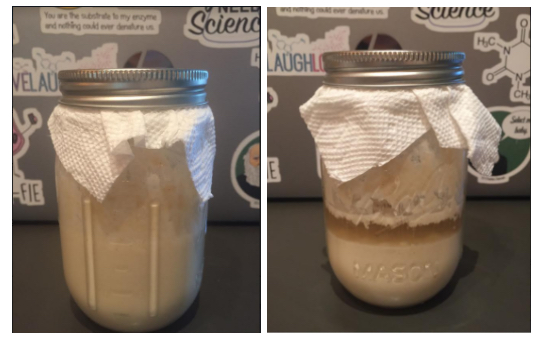
Photo used with permission from Annette Van Veghel
Biotechnology students experiment with sourdough bread cultures for an at-home lab.
November 24, 2020
Being a teacher of any kind is challenging, regardless of pandemics and virtual learning. Now that school is completely online, teachers have had to adapt and modify their entire curriculum for each class. While each class has been impacted in its own way, science classes, which require a more hands-on experience, have had to change almost everything.
Science teachers note the difficulties of online learning. Not only are labs more challenging to conduct and classes more difficult to teach without the in-person element, but teachers have been working constantly, putting in more hours than they normally would.
“I often tell family members that the best part of teaching – the part that’s kept me in it – is the interaction I have with students. The day to day give and take, the feedback […]. It doesn’t transfer online – everything has to be changed. It’s a gigantic workload to change everything and tweak it. I met with [a class] this morning. Nobody talked, nobody chatted. Nothing. It’s all black screens – 20 minutes of me just rambling on,” Annette Van Veghel, AP biology and biotechnology teacher, notes.
Besides a lack of interaction, many science teachers have also found that they’ve had to cut labs or completely modify them to be COVID safe.
Amy Hermanson, biology, physics, and environmental science teacher, says, “I had to cut a ton of labs in environmental science because they require equipment or a field trip. We go to the Yahara River for water samples for water pollution testing, for example. With COVID, I do not feel comfortable asking students to go out, and some supplies are just too hard or expensive to get to students.”
Since in-person labs are so challenging to conduct, science teachers have had to work around the endless barriers and find ways for students to still learn the material while remaining independent and COVID-safe. A lot of science experiments require certain technology or equipment that students don’t always have access to, As a solution, a lot of science teachers have become reliant on virtual labs.
“I’ve been lucky in that I’m finding virtual labs that are similar [to regular labs], but it does not take the place of the real lab. Normally I would never use the virtual labs–they’re the backup plan. Students don’t get the experience of the lab skill, like physically doing things, measuring, and figuring it out […]. I’ve really tried to give a ‘do it at home’ version, but that becomes increasingly difficult based on the material we’re covering,” Van Veghel says.
Van Veghel notes that biotechnology, a class she designed that typically includes 25 to 30 labs per semester, is especially difficult. “The whole point of the class is lab-skill based so that kids could take it, and it wasn’t so much theory, but rather learning lab skills–pipetting, working with enzymes, equipment, and things like that. I had to write a new curriculum. I could use some of the things I’ve used before, but it’s different.”
Despite the many challenges of virtual school, science teachers have found some successes as well. Hermanson has her physics students do one lab at home per week. When students don’t have or cannot find certain items, she drops them off for them. At the beginning of November, the students did a gravity lab, which involved a ramp, a ball, and a high spot. In an email interview, Hermanson noted that it was a wonderful success.
“One of the surprising things I found was that family members were helping with the labs. It was wonderful to see parents and siblings participating in labs and helping out. We also had pets chasing the balls as they were dropped, and the most wonderful part was that my students were laughing and trying and actually doing physics,” Hermanson says.
Van Veghel also has her biotechnology students attempt labs on their own, like making cheese and sourdough bread. While the results weren’t as successful, Van Vegel did her best to help each student along the way. “If they didn’t want to use an enzyme, they told me and I went into school and did it for them, [then] left it in the attendance office so they could pick it up,” Van Veghel says. “I ran experiments as well and provided the data for students who couldn’t do them.”
It’s undeniable that every class is different right now. Students and teachers alike have had to adapt and conduct experiments of their own in order to get the full educational experience. Regardless, our science teachers’ tireless efforts are all in place for us, the students.


